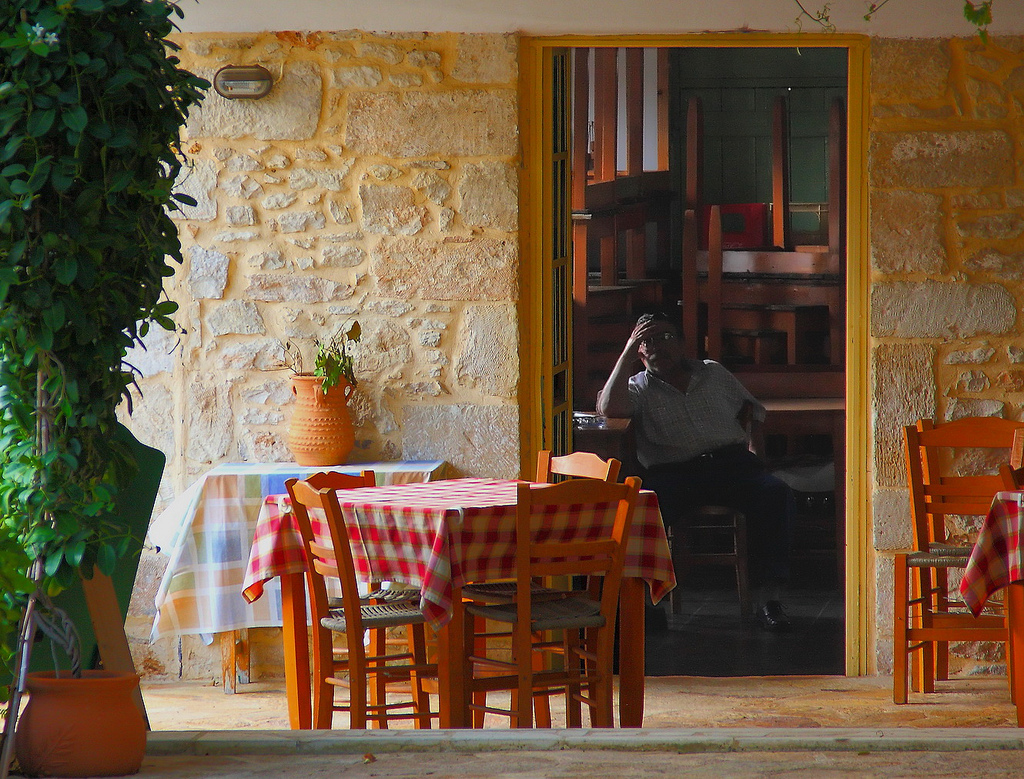 Crete is a world all its own. Unlike the rest of Greece, this large island is distinctive in every possible way. From the bustling capital of Chania to the stunning beaches and towering mountains, Crete is both mysterious and welcoming.
Crete is a world all its own. Unlike the rest of Greece, this large island is distinctive in every possible way. From the bustling capital of Chania to the stunning beaches and towering mountains, Crete is both mysterious and welcoming.
For those wishing to spend quality time by the sea, Malia holidays in 2014 offer visitors the chance to immerse themselves in Cretan culture, sample the incredible cuisine of the island and soak up the lovely weather on the northern shores of the island.
While there is no shortage of activity on this massive island, the one thing that should consume a significant amount of holiday time is eating. Cretan cuisine is not about complicated dishes, it is about the basics, unbelievably fresh ingredients that create pure and delicious tastes.
A drive through Crete’s countryside yields delicious smells of wild herbs and flowers. There are over thirty kinds of wild greens growing on the slopes of Crete’s mountains, among them are the freshest wild sage, oregano, thyme and marjoram you will ever taste.
Cretan fruit and veg is sourced from local villages and farms surrounding towns and cities. The rural outskirts of Malia, for example, supply almost all of the vegetables and fruit on offer in the town’s restaurants, so even if you never make it out into the wider landscape, the landscape comes to you in the form of fresh produce.
Cretan cheese are in a class all their own. Among the abundant varieties on offer, anthotiros is a mild soft goat and sheep cheese that turns salty and earthy when hardened, mizithra is the typical fresh sheep’s cheese of Crete and is hard to stop eating, and the typical hard cheese called Graviera is particularly delicious when fried and served hot.
Fish and poultry are also staple ingredients in Cretan cuisine and locals have a particular affinity for rabbit dishes but lamb and beef dishes are equally mouth-watering. Unfortunately over-fishing around Crete has become a problem in recent years and has thus driven up prices of fish. As an alternative to some pricier fish dishes, some might be interested in sampling local squid. Squids are bashed against rocks after being caught in a preparatory ritual that tenderises the meat and ensures remarkable flavour. 
Olive oil is perhaps the single most important ingredient in Cretan cuisine. Almost every dish includes at least one generous spoonful of the stuff, and it is all sourced locally from one of Crete’s 1.5 million olive trees.
While individual ingredients create distinctive flavours and textures, the olive oil ties everything together to create a culinary experience that is absolutely incredible.
Finally, no meal is complete without raki, which is the local Cretan drink made from the remains of grapes. Smoother and less potent than Italian grappa, raki is served with every type of food and compliments savoury and sweet; morning, noon and night.
Not only is Cretan cuisine some of the most unique in Europe, it is also some of the healthiest. From the ingredients to the preparation methods to the local family style approach to meal time, Cretan cuisine is a truly unique experience (that often lasts for hours). Indulge in the local fare and linger for hours at your table, soaking up the atmosphere and the very last drops of olive oil.
Photo credit: flickr.com/photos/vassil_tzvetanov/4023113539 and colorworlds.biz.
This post was made possible by our partner sponsor Thomson.co.uk.

Renee Blodgett is the founder of We Blog the World. The site combines the magic of an online culture and travel magazine with a global blog network and has contributors from every continent in the world. Having lived in 10 countries and explored over 90, she is an avid traveler, and a lover, observer and participant in cultural diversity. She is also the founder of the Magdalene Collection, a jewelry line dedicated to women’s unsung voices and stories, and the award-winning author of the bestselling book Magdalene’s Journey
She is founder of Blue Soul Media and co-founder of Blue Soul Earth as well as the producer and host of the award-winning Blue Soul CHATS podcast, that bridges science, technology and spirituality. Renee also founded Magic Sauce Media, a new media services consultancy focused on viral marketing, social media, branding, events and PR. For over 20 years, she has helped companies from 12 countries get traction in the market. Known for her global and organic approach to product and corporate launches, Renee practices what she pitches and as an active user of social media, she helps clients navigate digital waters from around the world. Renee has been blogging for over 16 years and regularly writes on her personal blog Down the Avenue, Huffington Post, BlogHer, We Blog the World and other sites. She was ranked #12 Social Media Influencer by Forbes Magazine and is listed as a new media influencer and game changer on various sites and books on the new media revolution. In 2013, she was listed as the 6th most influential woman in social media by Forbes Magazine on a Top 20 List.
Her passion for art, storytelling and photography led to the launch of Magic Sauce Photography, which is a visual extension of her writing, the result of which has led to producing six photo books: Galapagos Islands, London, South Africa, Rome, Urbanization and Ecuador.
Renee is also the co-founder of Traveling Geeks, an initiative that brings entrepreneurs, thought leaders, bloggers, creators, curators and influencers to other countries to share and learn from peers, governments, corporations, and the general public in order to educate, share, evaluate, and promote innovative technologies.








